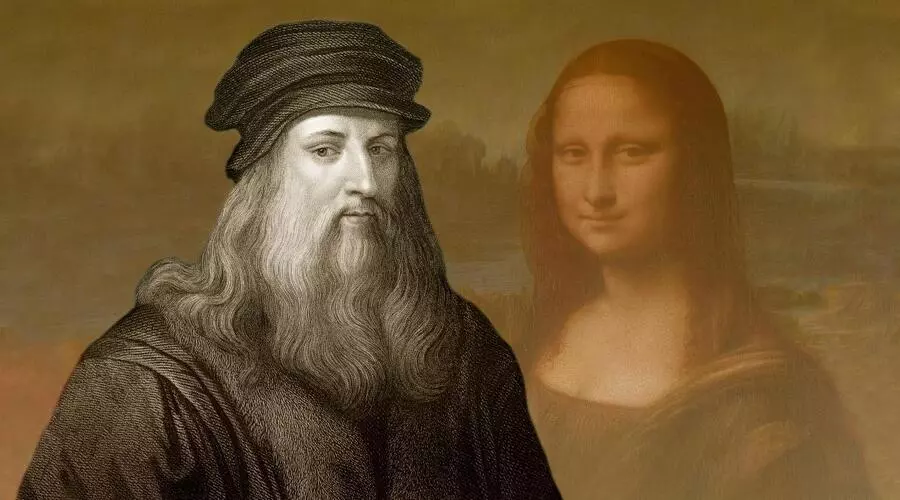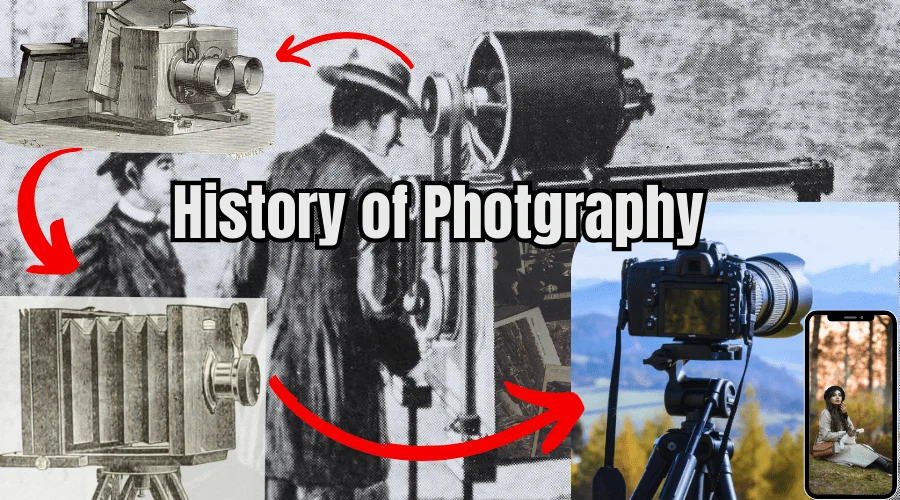
History of Photography : Camera, Photo & Video
The history of photography is interesting. It started at the beginning of the 18th century, and currently, it is becoming a billion-dollar industry where millions of people are working. We are currently habituated to color photography, which seems normal, whereas scientists have yet to work hard to reach this stage.
The First Cameras
The fundamental idea of photography has existed since the fifth century B.C.E. The journey was created when a scientist from Iraq created the camera obscura. It was done in the eleventh century.
Even then, the camera only projected images onto a different surface rather than recording them. Even though the images were reversed, they could be traced to produce precise drawings of real objects like houses.
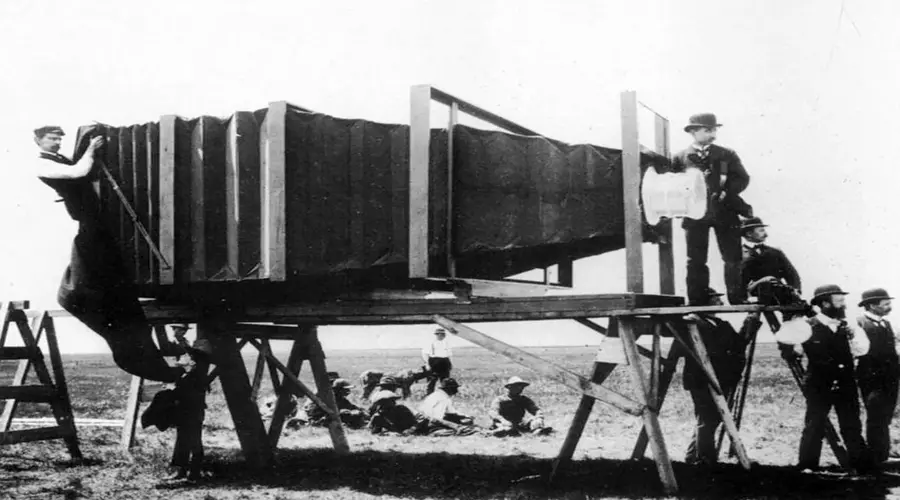
The first camera obscura projected a picture outside the tent into the darker space. They used a pinhole in the tent. In the 17th century, the camera obscura got small enough to be portable. Around this time, simple lenses for focusing light were also developed.
A Short Description of the History
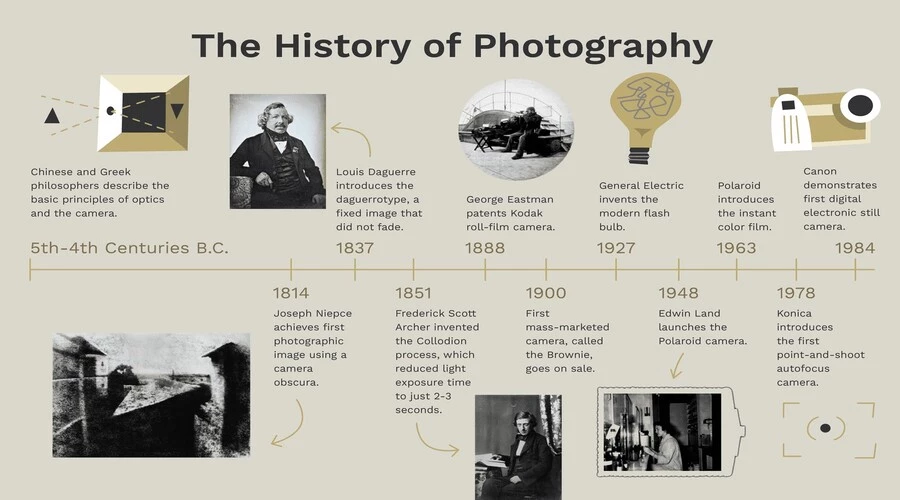
The story starts with the two basic principles: camera obscura and observation of different substances that are visibly altered by the aid of exposure to light. Before the 18th century, there is no description to measure capturing images with a light-sensitive material.
Johann Heinrich Schulze used a bottle of a light-sensitive slurry to capture cut-out letters. It was in 1717, but he never considered how to make the findings last.
Thomas Wedgwood made the first successfully documented, albeit unsuccessful, attempt to preserve camera images permanently in 1800. Wedgwood and his colleague, Humphry Davy, made a detailed photogram. Due to their efforts, they were unable to correct the images.
Daguerreotype
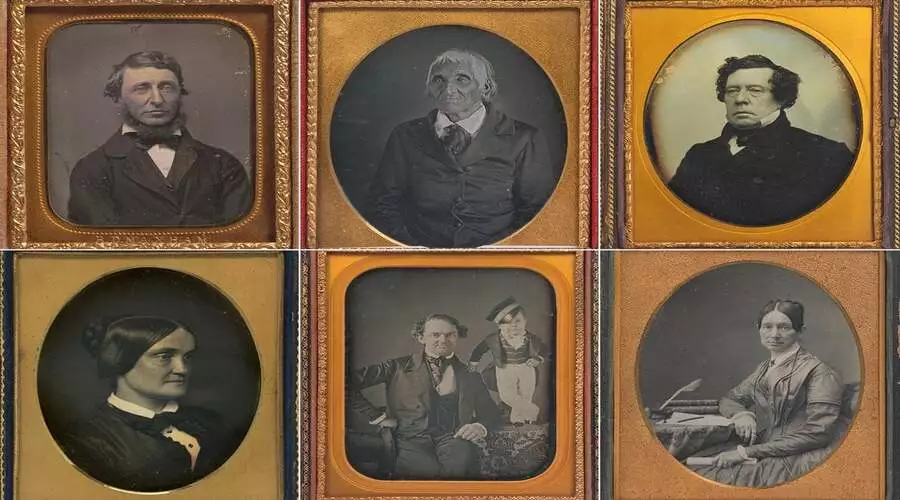
When purchasing a camera obscura from the optician Chevalier in 1829 for his work on painting theatrical scenes, French artist and chemist Louis Daguerre came into contact with Nicéphore Niépce, who had already succeeded in recording an image from a camera obscura using the method he invented: heliography.
Niépce and Daguerre corresponded after their meeting. Together with his brother Claude, Niépce created the Pyréolophore, an early internal combustion engine. He also improved the velocipede and experimented with lithography and related techniques.
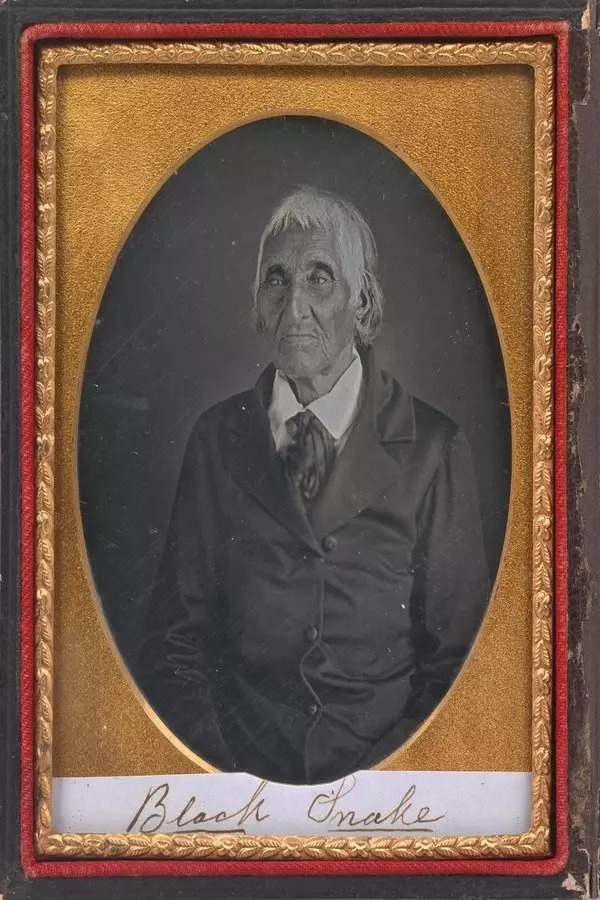
In their correspondence, it is clear that Niépce initially resisted disclosing any information about his photographic work. They were careful not to reveal any information prior to the invention's improvement.
Silver-plated copper to a mirror finish. It will make the surface light-sensitive. They will expose it to the camera as long as it is necessary.
In the beginning, the exposure times for the earliest daguerreotypes ranged from three to fifteen minutes, making the process nearly impractical for portraiture.
Here, modifications to the sensitization process coupled with the dynamic improvement of photographic lenses soon reduced the exposure time to less than a minute.
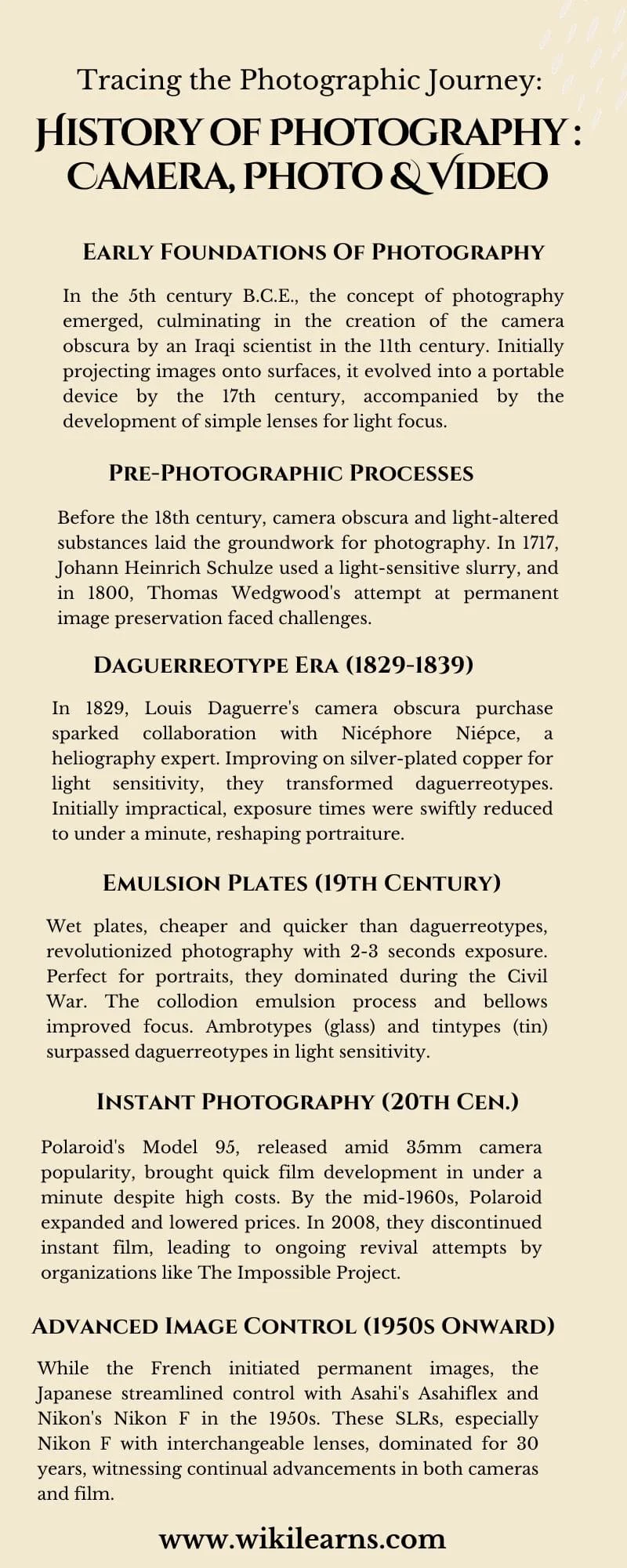
Download History of Photography Infographics
Emulsion Plates
Emulsion plates, also known as wet plates, cost less than daguerreotypes and only needed two to three seconds of exposure. Because portrait photography was the most popular type of photography, they were considerably better suited for it. Wet plates were used to create a large number of Civil War photos.
Instead of covering the picture plate, the collodion emulsion process was used for these wet plates. Around this time, bellows, which aid in focusing, were first used in cameras. Ambrotype and tintype emulsion plates were two popular varieties.
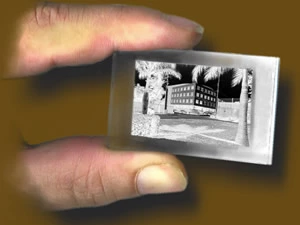
In contrast to daguerreotypes, which used a copper plate, ambrotypes used a glass plate. Tinplates were used in tintypes. These plates were far more sensitive to light.
Emulsion plates, also known as wet plates, cost less than daguerreotypes and only needed two to three seconds of exposure. As portrait photography was the most popular type, they were considerably better suited for it. Wet plates were used to create a large number of Civil War photos.
The Magic of Instant Images
The Model 95 was released by Polaroid at the same time 35mm cameras started to gain popularity. Film developed inside the Model 95 camera in less than a minute thanks to a covert chemical process.
Even though this new camera was very expensive, the novelty of quick photos attracted the public's interest. Midway through the 1960s, Polaroid had a wide range of models available, and the price had decreased to make it more affordable for more people.
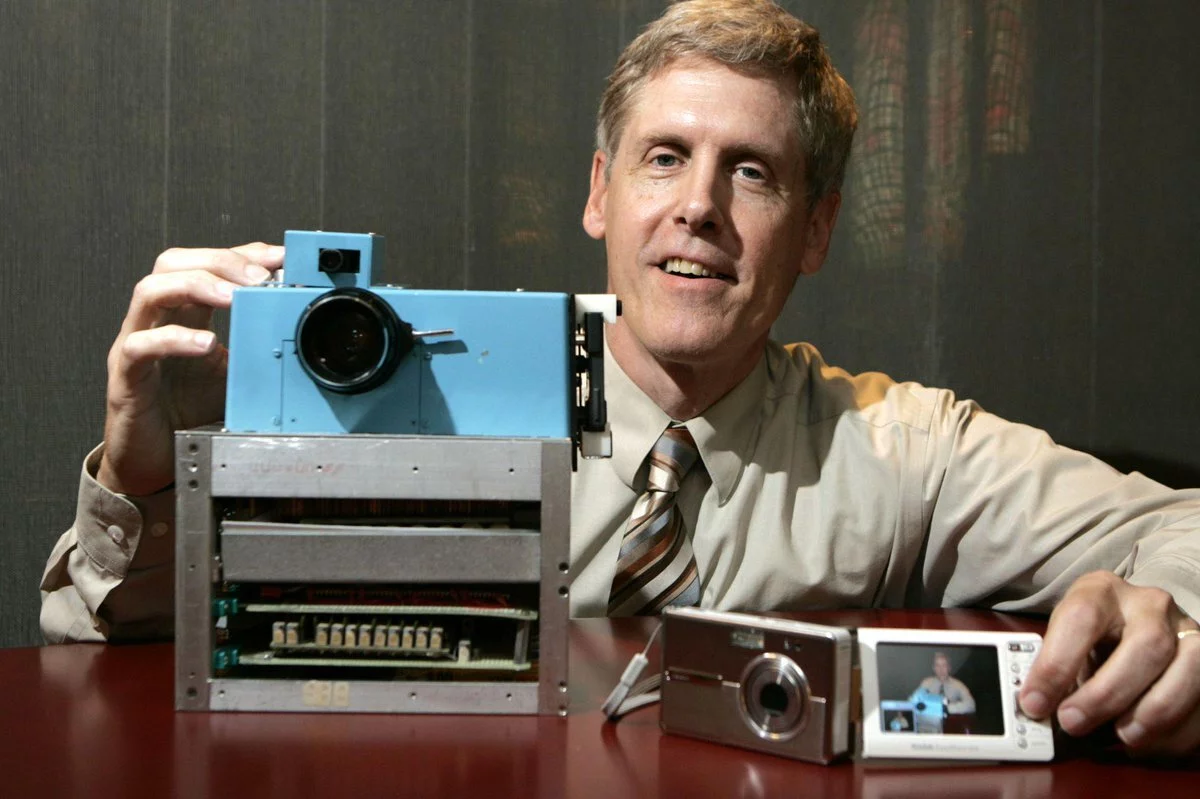
Polaroid discontinued producing their renowned instant film in 2008 and took their trade secrets with them. With varying degrees of success, numerous organizations, including The Impossible Project and Lomography, have attempted to bring back instant film. Even in 2018, it still needs to be improved to match the quality of a Polaroid.
Advanced Image Control
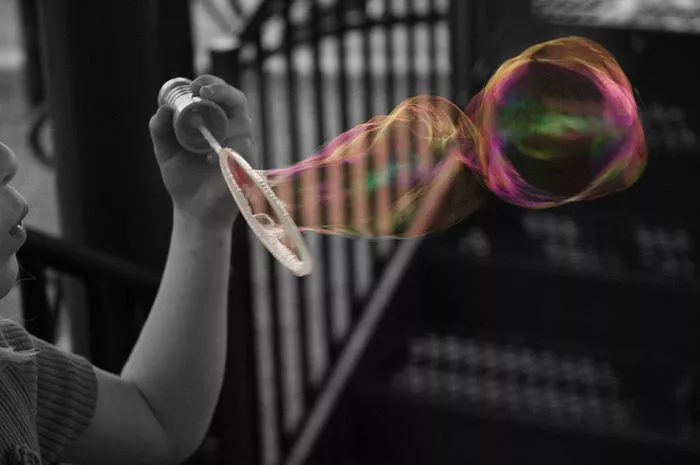
While the French invented the permanent image, the Japanese made it simpler for photographers to control their images. Asahi (which eventually became Pentax) debuted the Asahiflex in the 1950s, and Nikon debuted the Nikon F.
Both of these cameras were SLRs, and the Nikon F supported interchangeable lenses and other add-ons. SLR-style cameras remained the go-to cameras for the following 30 years. The cameras as well as the film itself saw several advancements.
Final few words | A Brief History of Photography
In this tutorial, we have tried to tell you the details of the history of photography. It took a long time to establish photography in the modern world. If you want to know more about photography, do not hesitate to comment below.
More Articles-
Creative Photoshoot Ideas at Home for Beginners
FAQ
What is the camera's brief history?
The camera obscura was the first camera ever known in human history. Chinese manuscripts from 400 B.C. and works by Aristotle from 330 B.C. both provide conceptual descriptions of camera obscura. By around 1000 A.D., the Arab scholar Ibn Al-Haytham had developed the idea of a camera obscura.
Who are the pioneers of photography?
- Louis Daguerre
- Mathew Brady
- George Eastman
- Andreas Gursky
- Auguste and Louis Lumière
- Julia Margaret Cameron
Who was the first famous photographer?
In 1825, Joseph Nicéphore Niépce made an innovation in the history of photography. He is considered the most famous photographer in history.
Who is the king of photography?
Iqbal Mohamed is known as the "King of Photography."
